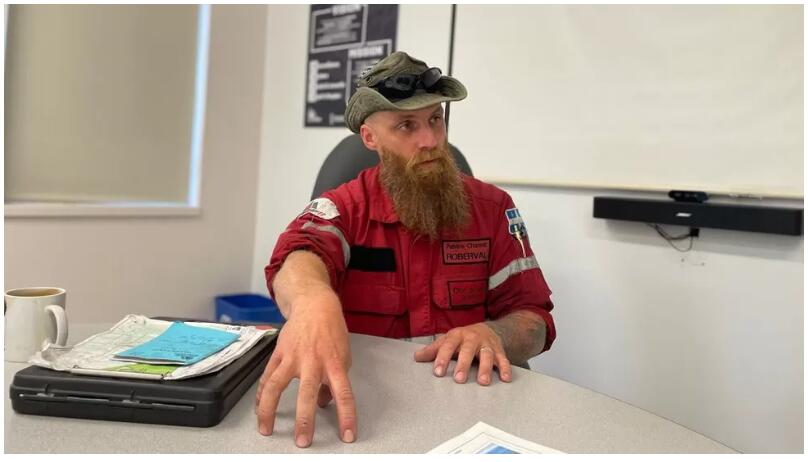Canada wildfire crews try to control the uncontrollable
Hazardous smoke from Canadian wildfires blanketed the skies in large parts of North America last week. The government says the country as a whole is on course for its worst year for wildfires on record. In the province of Quebec, over 120 fires are burning, and fire crews are battling an element that always surprises.
Six in the morning is not long gone, but work has already begun on Saturday in a nondescript two-storey office building in Roberval, a town of some 10,000 people in south-central Quebec.
That’s where the next 24 hours are being strategised in a fight against wildfires, a battle waged in increments and by the hour.
“A fire is alive, an uncontrollable element that we’re trying to control,” said Patrice Charest.
The 43-year-old, with a sleeve of tattoos, a canvas cowboy hat and a bushy red beard has been fighting fires for 20 years. He has been working 12-to-14-hour shifts for 19 days straight, without a break.
Firefighting water bombers – planes fitted with large water tanks – stand at the ready outside, along with helicopters to ferry on-the-ground fire crews to blazes burning in the regions north, east and west of the town.
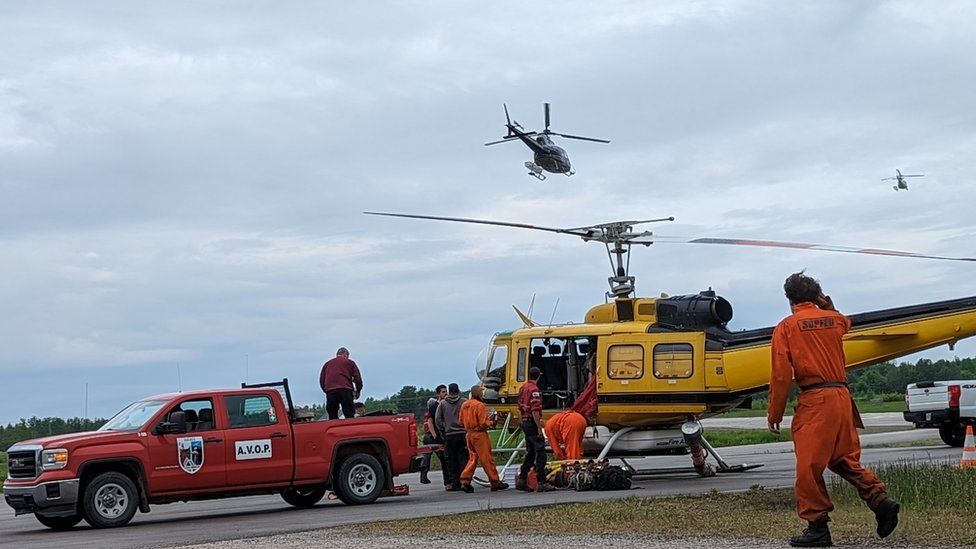
Inside the building, about 100 people with the provincial firefighting agency, the SOPFEU, are tracking the behaviour of each fire and the weather that could help or hinder their work.
That information will help them decide where to deploy strained resources like Mr Charest and his crews. “I execute – I’m the soldier, they send me to war,” the firefighter said.
His nemesis in recent days has been Fire 236, a 7,000 hectare (17,300 acre) blaze, now contained, that was threatening homes near the municipality of Notre-Dame-de-Lorette.
He’d hoped for 25 crew, but with over 120 fires burning in the province – over 728,000 hectares have burned this year to date, compared to the 2,147 hectare 10-year average – he understands why he’s forced to make-do with just 12.
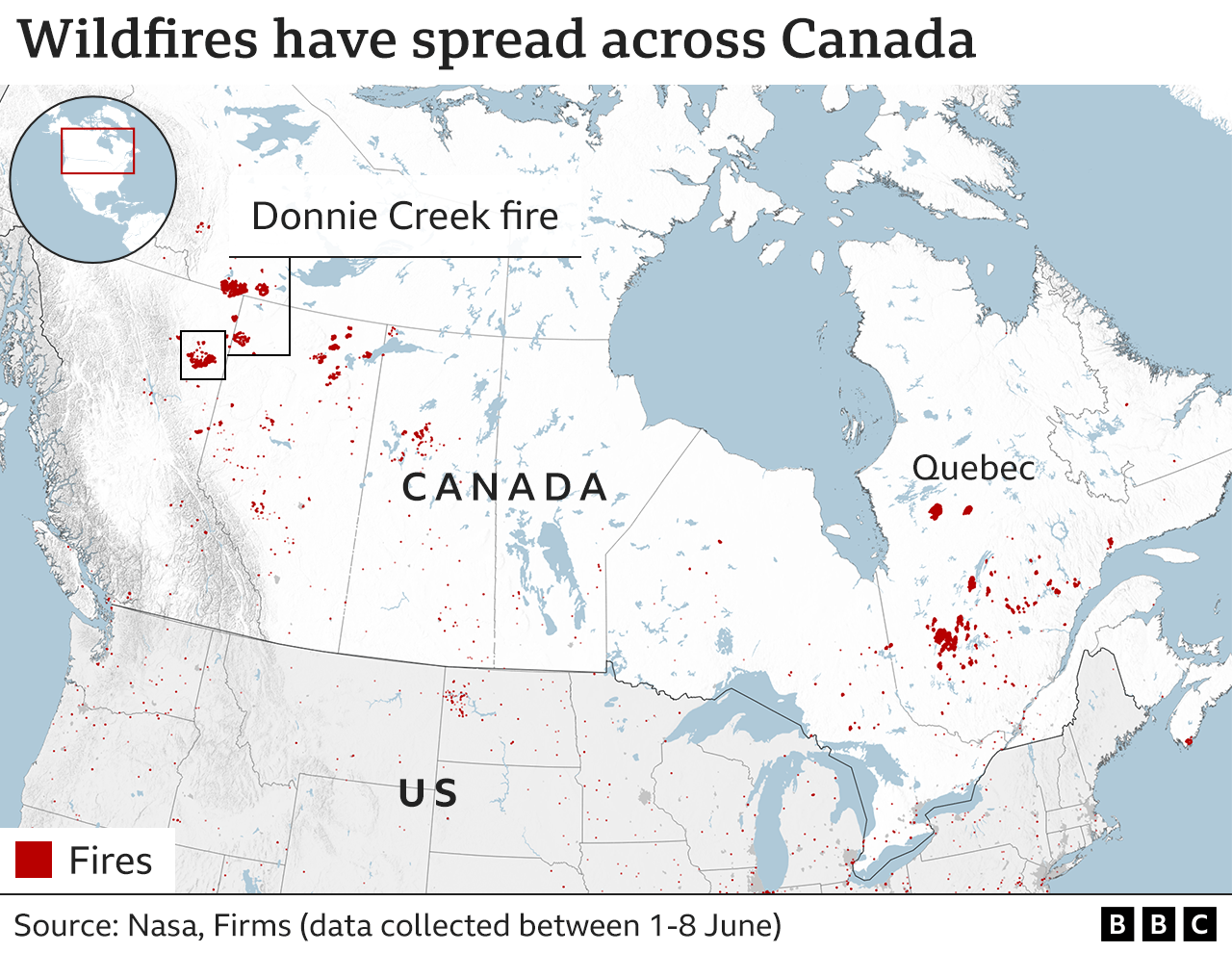
They’ve slowed the fire’s progress – on an aerial image, there’s a scar of blackened ground but no visual smoke and flames. But work on 236 is not done.
No flames does not mean the fire is out. Crews will be looking for fires that burn below ground in a layer of decaying roots, dead leaves and bark, that produce little to no smoke.
With experience, a firefighter like Mr Charest can detect the scent of the plumes of smoke produced by that type of fire.
“You look for it, put your nose to the wind,” he said. It’s a unique smell but one he struggled to describe.
A helicopter will scan the fire zone for hot spots and the crew will head to the scene later. “My guys will patrol the entire fire, inspect each square meter,” he said.
Earlier this year, Mr Charest was in the western province of Alberta, which declared a state of emergency in early May as fires prompted several evacuation orders.
Then overnight on 1 June, lightning in Quebec sparked around 200 fires overnight, said Frédéric André, the regional director at Roberval. Quebec was forced to call back its firefighters in other provinces and put out its own call for extra hands.
But with fires burning in Alberta, British Columbia, Nova Scotia and other regions, “nothing was left in Canada”, he said.
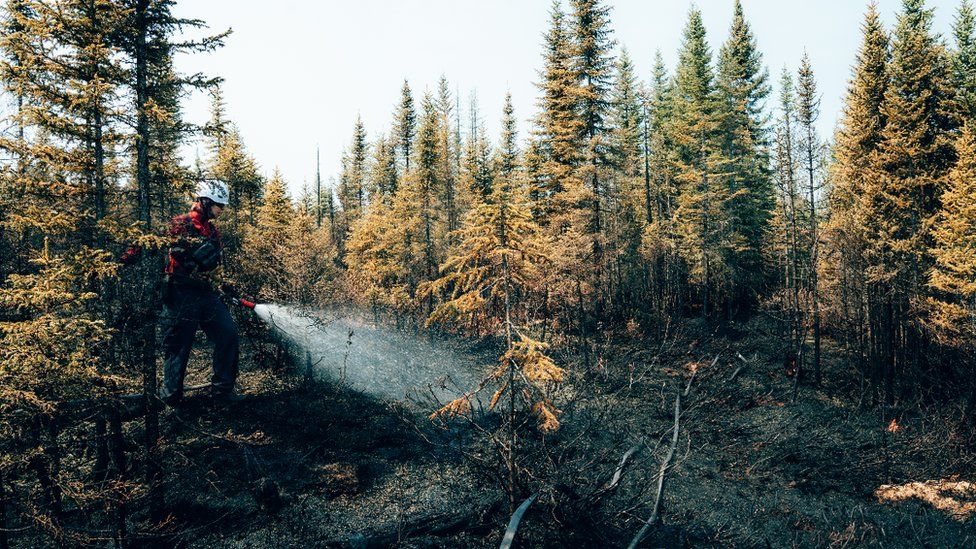
The country has now had to call on international help. Some 400 firefighters from France, the US and Spain have already arrived or will soon in Quebec, the province’s firefighting agency said.
The global network of firefighters is increasingly important, Mr André said, as fire seasons become more unpredictable with a changing climate.
“I have a very bad feeling now that each year, we break a [fire] record,” he said. “Every year is the worst somewhere.”
Mr André knows first-hand how volatile and terrifying wildfires can be.
He was part of a Canadian team that travelled to Australia in 2019 to help fight the so-called Black Summer – a series of huge, uncontrollable and intense bushfires that blanketed the eastern part of the country.
Fires of that size make an unmistakable grumbling sound, he said. For Mr André, who has been fighting fires since 1987, that year in Australia was the worst he’s ever seen.
It taught him that fires will always be stronger than the humans trying to fight them, he said.
He also learned the importance of making sure the public understands the danger of fires.
One fire this year chewed through 20km (12.5 miles) of brush in one day, he said, prompting speedy evacuations.
“If there is good wind and sunny conditions, the fire can go for a big run.”
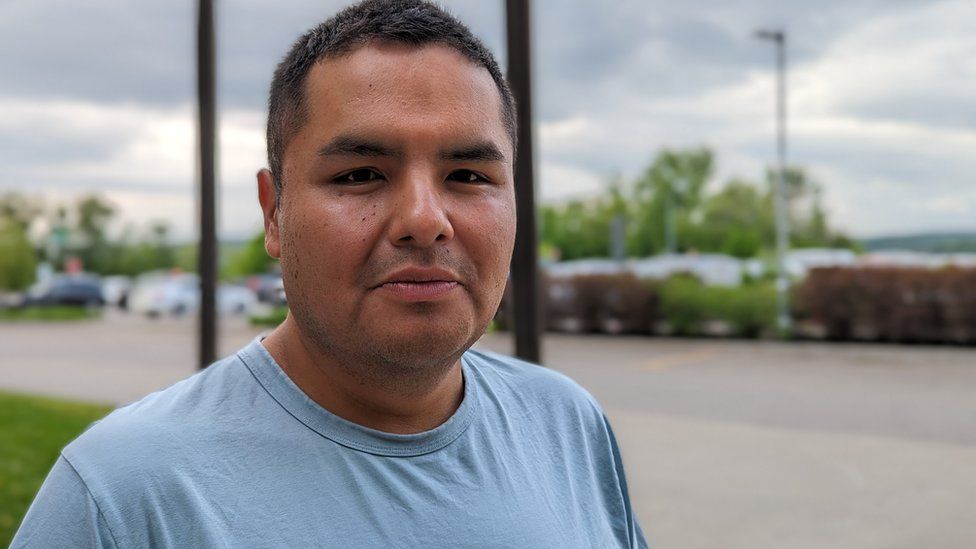
It’s also important to know how to prepare for the worst, he said.
It is a lesson that the Cree community of Ouje-Bougoumou has taken to heart, after being forced to evacuate for the first time ever early this week.
The roughly 650 residents have found refuge 392km (243 miles) away in the city of Saguenay, sleeping in makeshift shelters at local schools.
“We’re just waiting for the OK and when it is safe to go home,” Deputy Chief Lance Cooper said.
Fire marshal Lee-Roy Blacksmith said that since the evacuation, the community has created a fire break – a track carved around its perimeter to prevent the fires from burning through their town.
They have also cleared dead vegetation around homes to rob flames of any fuel.
Mr Blacksmith said these measures are to protect both from this fire and future ones.
“That’s mother nature, and we don’t have control of mother nature,” he said.
Wildfires are part of the ecosystem, Mr André said, and remote ones are often left to burn. Firefighters intervene when the flames encroach on communities or critical infrastructure.
“Some tree spaces need fire to grow and renew,” he said, as the flames help clear invasive pests and even promote new growth.
But this fire season has been unprecedented, in the number of fires, the early start to the season and the number of fires burning dangerously close to towns.
As the battle on the ground continues, Quebec’s firefighters remain unsure of what this season will bring. But they know there is a lot of work ahead.
For Mr Charest, the smoke, the bugs and the long hours away from home have not doused his passion for firefighting.
“The fire, when I see it from above, I circle it, I speak to it. It’s an entity and I tell it: ‘I’m coming for you, I’m going to break you,” Mr Charest said.
